-
TrackoBit
Manage commercial vehicles with the new-age Fleet Management Software
TrackoBit -
TrackoField
Streamline your scattered workforce with Field Force Management Software
TrackoField -
Features Resources
-
Blog
Carefully curated articles to update you on industrial trends. -
White Paper
Insightful papers and analysis on essential subject matters. -
Glossary
Explore an alphabetical list of relevant industry terms. -
What’s New
Get TrackoBit & TrackoField monthly updates here. -
Case Study
Explore the cases we solved with our diverse solutions. -
Comparisons
Compare platforms, features, and pricing to find your best fit.
-
About Us
Get to know TrackoBit: our team, ethos, values, and vision. -
Careers
Join the most dynamic cult of coders, creatives and changemakers. -
Tech Support
Learn about our technical support team and services in detail. -
Events
Check out the exhibitions where we left our marks and conquered. -
Contact Us
Connect with us and let us know how we can be of service.
What Is Direct-Store Delivery (DSD)? What Are Its Benefits?
- Author:Tithi Agarwal
- Read Time:5 min
- Published:
- Last Update: August 22, 2024
Table of Contents
Toggle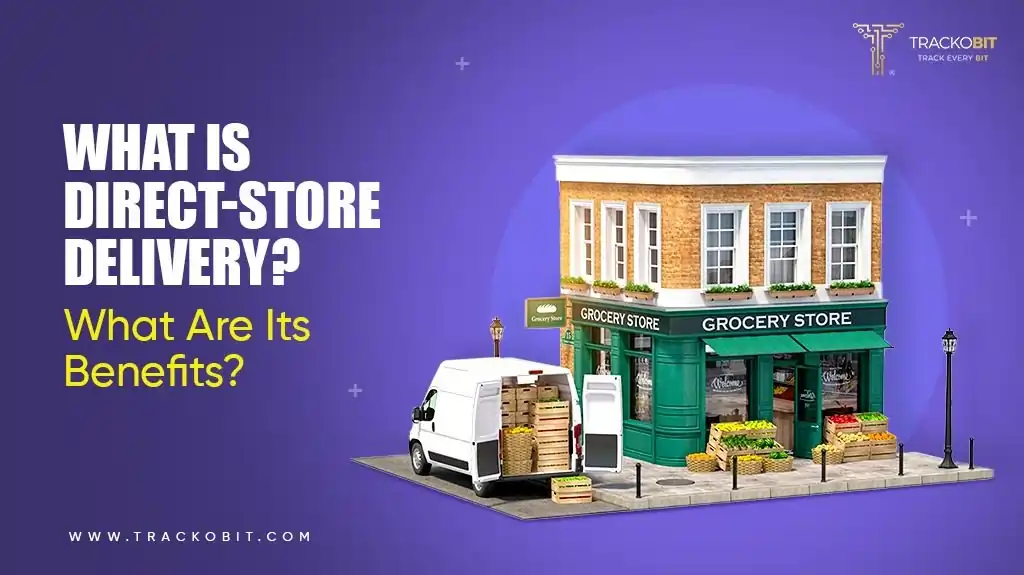
Direct Store Delivery (DSD) is the perfect method for manufacturers and retailers looking to shorten the supply chain cost and duration. Here’s how it works-
Table of Contents
Toggle
With online shopping becoming a second nature for consumers, retailers must work harder to keep up with the race. This is causing them to lean towards the direct store delivery format. It allows them to cater to consumer demands more efficiently and speedily.
Wait a second – we get everything you are talking about, but what is direct store delivery (DSD) that you are talking about?
DSD is an interesting and beneficial form of supply chain and logistics for retailers to keep their grip on the market.
Scroll down to satisfy your curiosity buds.
Also Read – What is a Traveling Salesman Problem
What is Direct Store Delivery (DSD)?
Direct store delivery (DSD) is a distribution model usually adopted by retailers. Under this model, manufacturers/suppliers deliver directly to retailers instead of sending the goods from warehouses or distribution centres.
It is helping businesses to reduce labour costs, warehouse maintenance and wholesale retail distribution channel costs. Direct store deliveries are a boon for retailers selling perishable items with tight delivery and consumption windows. This model works best for pharmacy stores, convenience stores, gas stations, and food and beverage production.
| Seven of the top ten largest grocery categories (by unit sales volume) are managed through DSD processes (Beer, Carbonated Beverages, Fresh Produce, Milk, Salty Snacks, Bread and Baked Snacks, Frozen). |
What is the Process of DSD?
DSD process involves retailers placing orders directly with sellers or suppliers. After receiving orders electronically or through telephonic means, retailers start picking and packing order for further dispatching it. The process of the DSD model is such that it saves time, eliminates the need for middlemen and gets the product delivered quickly while also ensuring that they are fresh.
Here are the simple steps for how the order is generally processed from the supplier’s end, managed, and transported until it reaches the retailer’s doorstep.
- Order Placed/Generation: The very first step is the retailer store owner placing the order directly with the manufacturer or supplier. Order for the product can be placed over call, electronic ordering systems or in-person visits by the sales representatives.
- Product Preparation: On receiving the order, the manufacturer/ supplier at once gets to prepare the products for a ready and quick dispatch. This involves preparing and packing
- Loading up the Trucks: The order is loaded in the trucks, usually, reefers, as the model is best used for time and temperature-sensitive products such as medicines, food, beverages, etc.
- Routing and Scheduling: The delivery route is optimised to ensure timely and efficient delivery to multiple retail stores. The schedule considers factors like delivery windows, traffic conditions, and the specific requirements of each store.
- Delivery: The delivery trucks transport the products directly to the retail stores. Usually, the delivery personnel are in charge of unloading the order.
- Merchandising: In many cases, the delivery personnel also play a role in merchandising the products. This involves restocking shelves, arranging displays, and ensuring that the products are presented attractively to customers.
- Inventory Management: The delivery personnel may also handle inventory management tasks, such as conducting stock counts, verifying order accuracy, and managing product returns or exchanges.
- Invoicing and Payment: Payment processing is typically handled electronically, with invoices generated based on delivered products. Retail stores are then responsible for settling their accounts with the manufacturer or supplier.
- Communication and Feedback: Communication between the manufacturer or supplier and the retail store is essential. Any product quality, delivery, or inventory level issues must be addressed promptly.
- Data Collection and Analysis: Data related to sales, inventory levels, and customer preferences may be collected and analysed to improve the efficiency of the DSD process and better meet customer demand.
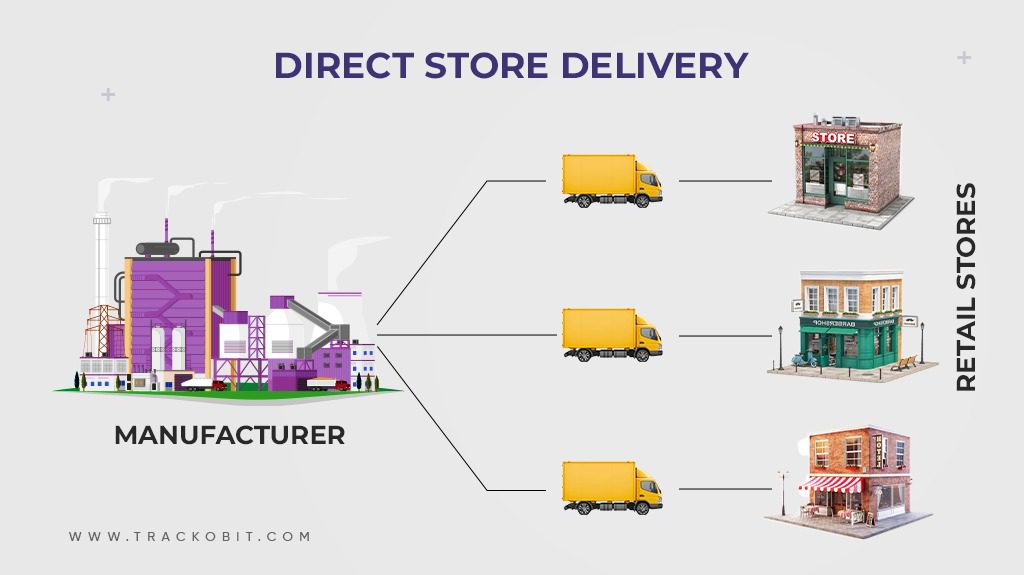
Benefits of Direct Store Delivery
The DSD retail model is widely used as a primary distribution model for retailers in the case of fast-moving consumer goods and perishable items.
Enables Quick Time to Market
Since there is no requirement for a middleman in the DSD distribution model, there is a significant reduction in overall time to market, allowing suppliers to deliver products faster.
Effective Handling of Perishable Goods
Perishable items such as fresh produce, vegetables, flowers, and poultry items need careful handling and cold chain monitoring In the DSD model, merchandise is packed and dispatched directly, thereby minimising the risk of damage to fragile consumer products.
Boosts Seasonal Selling
Many retail businesses earn additional revenue by selling flowers and teddies on Valentine’s Day (basically saviour for last-minute lovers). Direct store Deliveries are immensely profitable during these festive seasons when the demand for such goods is high, and there is limited time for such manufacturers to make them available in the market.
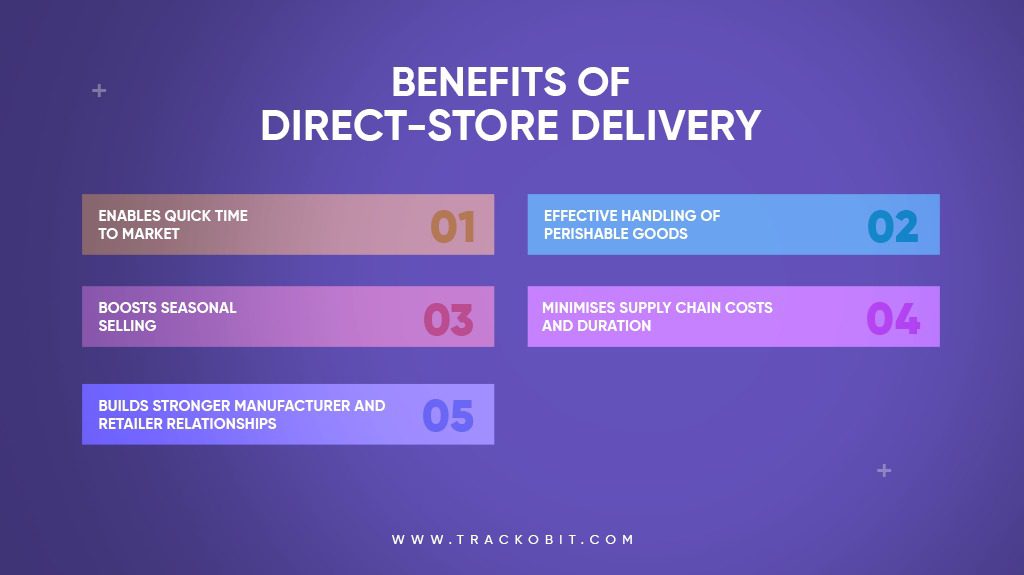
Minimises Supply Chain Costs and Duration
With the DSD retail model, businesses can reduce storage and labour costs by skipping the secondary distribution channel and warehousing. And since there are no middlemen, the orders are directly given to retailers. Reducing the lengthy process of retailers contacting the middlemen and then they cracking a deal with the manufacturers.
As businesses can directly deliver goods to retail markets, there is no added cost, such as the fee paid to wholesale distributors to manage goods.
Builds Stronger Manufacturer and Retailer Relationships
The direct store delivery method connects a brand directly to the retailer, building a better relationship with the end market player. Since the manufacturer is selling and connecting with the retailers directly, it is giving them regular market insights- like insights on demand, reviews of the consumers and trends and patterns.
This is Where TrackoBit comes in
TrackoBit offers state-of-the-art logistics technology to manufacturers involved in direct store deliveries. It optimises the DSD supply chain with solutions like automated route planning and optimisation, cold chain monitoring, fleet management and real-time visibility.
Delivery Route Planning and Optimisation
Manufacturers can automate the route planning process using TrackoBit’s automated route management solution The software optimises and suggests the most efficient route. That will help ensure the delivery is on time, reduce fuel consumption and win the retailers’ satisfaction level. (Quick deliveries will also help retailers win their customers’ hearts in return.)
Real-Time Visibility and Tracking
Suppliers and manufacturers are getting complete visibility of their fleet driver performance. They have complete insights into the vehicle’s health and get notifications whenever the drivers deviate from the optimised path. This helps to deflect delays or damages.
Cold Chain Monitoring
Since the DSD model deals with perishable and temperature-sensitive products, they have to be typically delivered at a controlled temperature. TrackoBit can greatly help in this case as it has cold chain monitoring software that sends out alerts to suppliers and manufacturers in case of temperature fluctuations.
Summing Up!
The DSD model is helping retailers beat the online shopping competition. It is beneficial for retailers and manufacturers as they no longer have to maintain a warehouse or pay labourers. Not to forget, you get to win over your customer’s satisfaction and wallets.
TrackoBit might be the key to successfully implementing the DSD model as it can help ensure that the products reach the retailers on time and maintain the freshness of the produce.
Tithi Agarwal is an established content marketing specialist with years of experience in Telematics and the SaaS domain. With a strong background in literature and industrial expertise in technical wr... Read More
Related Blogs
-

Plug, Pair, Perform TrackoBit Introduces BLE Sensor Integration
Tithi Agarwal November 26, 2025TrackoBit’s BLE Sensor Integration enables wireless, real-time monitoring with faster installs and accurate insights. It improves fleet efficiency, visibility, and…
-

How to Use Driver Behavior Reports as a Sales Hook to Close Big Fleets
Tithi Agarwal October 16, 2025TrackoBit’s driver behavior reports empower fleet providers to win big contracts by showcasing safety, efficiency, and measurable ROI.
-
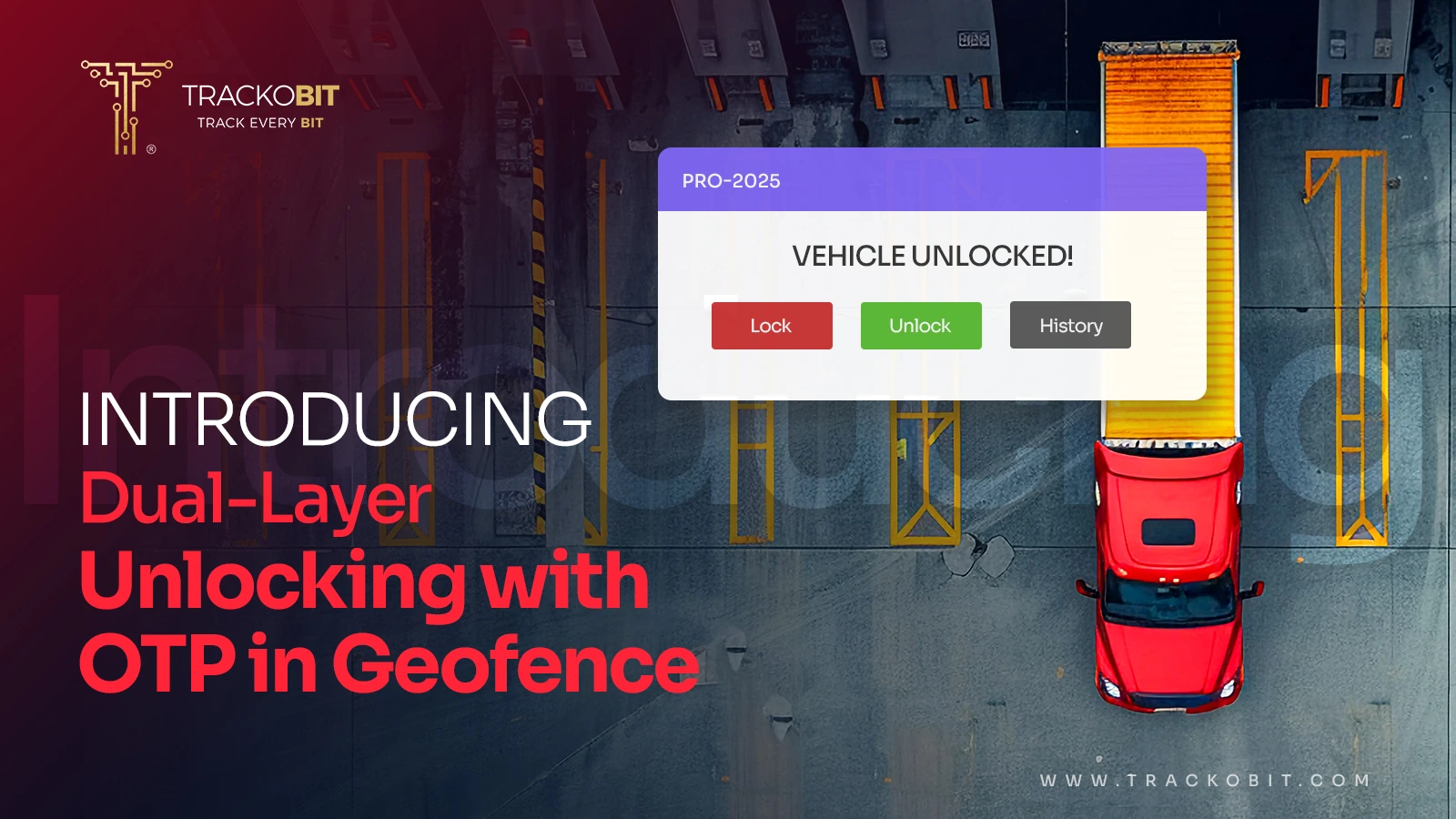
TrackoBit’s Unlocking in Geofence with OTP: Elevating Cargo Protection
Tithi Agarwal September 16, 2025TrackoBit’s latest feature – Unlocking in Geofence with OTP lets you lock out theft and unlock cargo only at the…
-
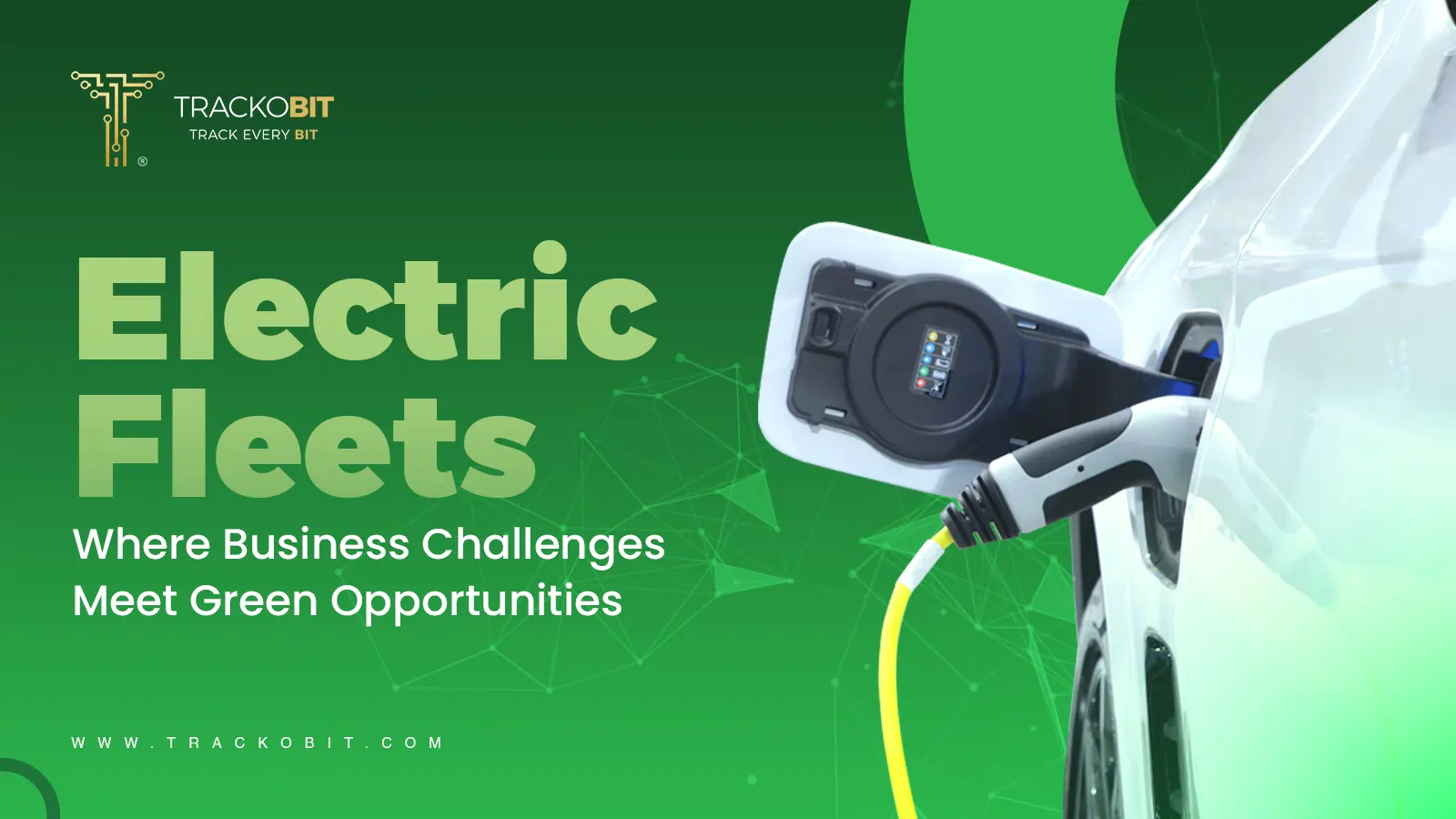
The Rise of Electric Fleets: Challenges and Opportunities for Businesses
Tithi Agarwal September 4, 2025The global fleet landscape is poised for a decade-long transformation. This change is being powered by electricity. Logistics-led businesses are…

Subscribe for weekly tips to optimize your fleet’s potential!
Your inbox awaits a welcome email. Stay tuned for the latest blog updates & expert insights.
"While you're here, dive into some more reads or grab quick bites from our social platforms!"Stay Updated on tech, telematics and mobility. Don't miss out on the latest in the industry.
We use cookies to enhance and personalize your browsing experience. By continuing to use our website, you agree to our Privacy Policy.

































